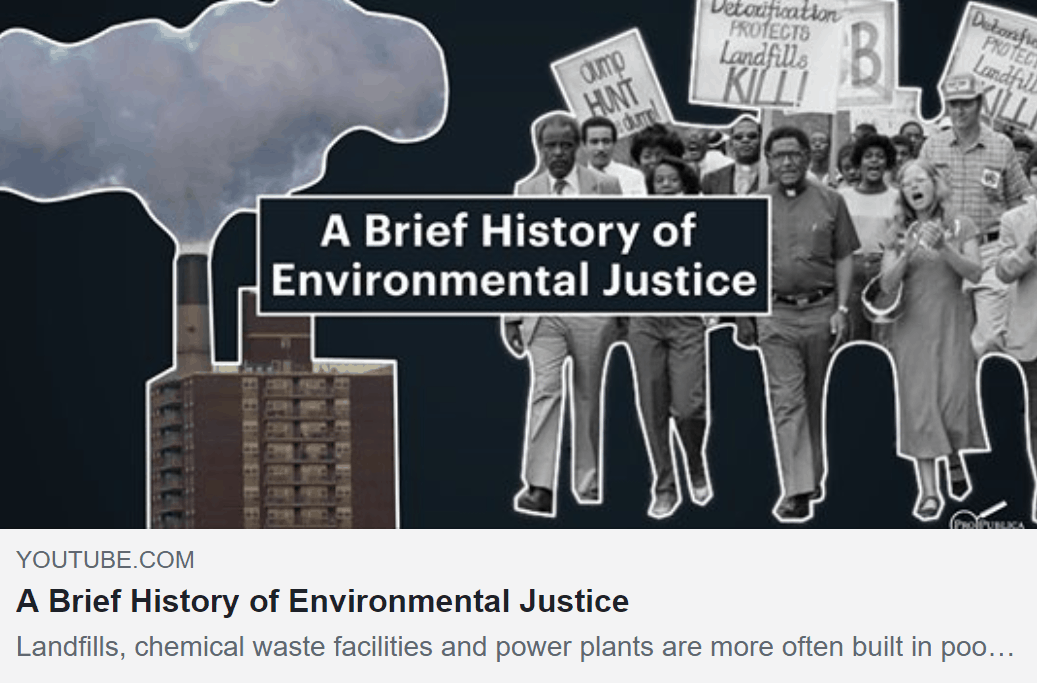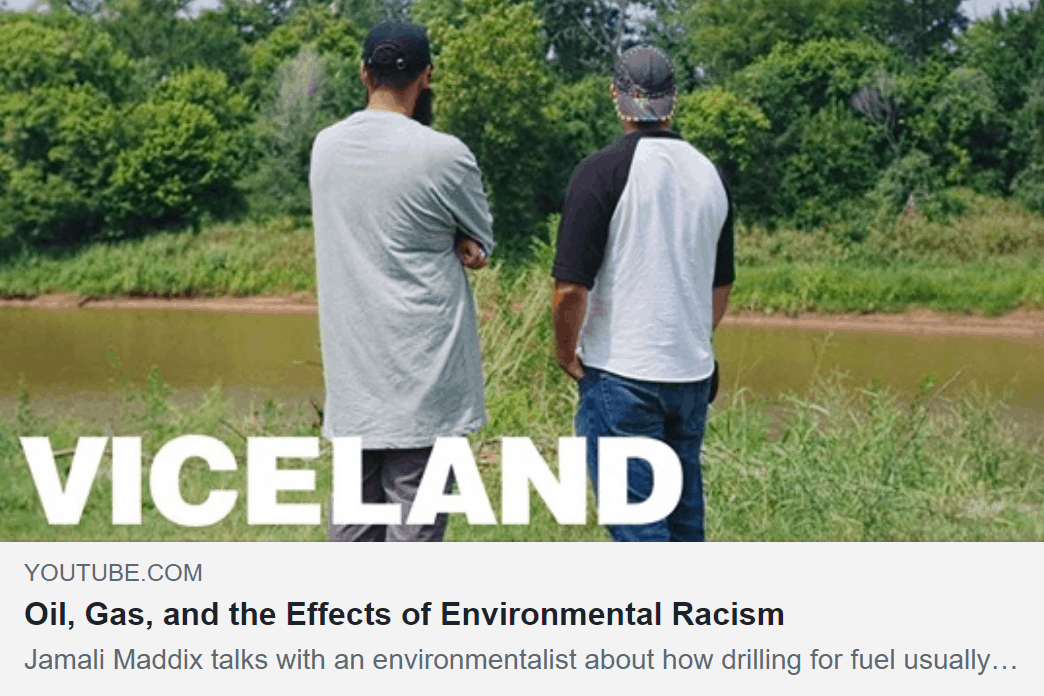
It is no coincidence that the people who live in the most polluted environments are most likely to be people of colour and impoverished. The environmental risks these communities face include exposure to hazardous chemicals or factors higher than those commonly accepted as safe for the general public and closer proximity to industrial pollution, landfills, toxic dump sites and high-traffic transportation corridors.
That environmental risks are not uniformly distributed across all communities gives proof to what's called environmental racism. In order to advocate for healthier communities for all, it's imperative to understand how system racism became woven into the fabric of environmental policy and business. Here are 9 articles, podcasts and videos to start becoming better informed about environmental racism.
READ
Intersectional Environmentalism: Why Environmental Justice Is Essential for a Sustainable Future
Author: Leah Thomas
About: "Throughout my studies, I became startled by the facts that it was indeed harder for black, brown, and low-income communities to have access to clean air, water, and natural spaces... As my textbooks encouraged me to protect public lands so they could be preserved and enjoyed, I couldn’t help but wonder, 'for whom?'"
Read the article Intersectional Environmentalism: Why Environmental Justice Is Essential for a Sustainable Future
"They Chose Us Because We Were Rural and Poor": When Environmental Racism and Climate Change Collide
Published: March 2019
Writer: Megan Mayhew
About: "The environmental movement has a long history in America’s south – yet people of color and impoverished communities continue to face dangerous pollution."
Read the article "They Chose Us Because We Were Rural and Poor": When Environmental Racism and Climate Change Collide
Flint Water Crisis is the Most Egregious Example of Environmental Injustice, Says Researcher
Published: October 2018
Author: Jim Erickson
About: "Mohai and Bryant have revealed a pattern across the country: Certain communities are disproportionately burdened by environmental contamination and health risks. Like Flint, those places tend to be locations where poor people and people of color are concentrated."
Read the article Flint Water Crisis is the Most Egregious Example of Environmental Injustice, Says Researcher
Trump's Environmental Protection Agency Concludes Environmental Racism Is Real
 GERALD HERBERT / AP via The Atlantic
GERALD HERBERT / AP via The Atlantic
Published: February 2018
Author: Van R. Newkirk II
About: "A new report from the Environmental Protection Agency finds that people of color are much more likely to live near polluters and breathe polluted air—even as the agency seeks to roll back regulations on pollution."
Read the article Trump's Environmental Protection Agency Concludes Environmental Racism Is Real
WATCH
Published: August 2017
About: "Landfills, chemical waste facilities and power plants are more often built in poor and minority communities, which don't have the power or money to advocate for themselves. For decades, these communities have called for environmental justice: the idea that people shouldn't be forced to deal with more pollution because they belong to a certain race, national origin or income bracket."
Watch the short video A Brief History of Environmental Racism
Released: March 2018
About: "Jamali Maddix talks with an environmentalist about how drilling for fuel usually means pushing contamination into the places where lower-class people live."
Watch Viceland's video Oil, Gas, and the Effects of Environmental Racism
TEDxGreatPacificGarbagePatch - Van Jones - Environmental Justice
Released: December 2010
About: "Van Jones speaks about plastic pollution and how it affects poor and marginalized people."
Watch TEDxGreatPacificGarbagePatch - Van Jones - Environmental Justice
LISTEN
Why We Need to Talk About Environmental Racism
Released: June 4, 2020
About: Elise Loehnen, chief content officer at GOOP interviews Rhiana Gunn-Wright, the director of climate policy at Roosevelt Institute, about her contributions to the Green New Deal. Gunn-Wright remarks, "Historically in the US, progress has meant exploitation of someone, and usually people of color."
Listen to the podcast Why We Need to Talk About Environmental Racism








